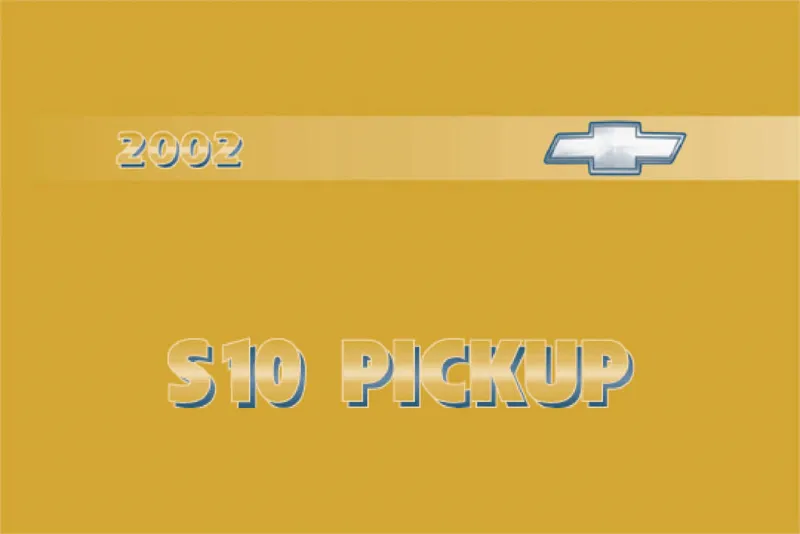2002 Chevrolet S10 Owner's Manual

Table of Contents
2002 Chevrolet S10 Overview
Introduction
The 2002 Chevrolet S10 is a midsize pickup truck that blends rugged durability with versatile functionality. Designed to cater to both urban professionals and weekend adventurers, the S10 offers a compact physique that makes it suitable for tight parking spaces while still providing ample power for both work and play. With its reliable build and significant payload capacity, this model stands out as a practical choice for those who require a dependable vehicle without compromising comfort or style.
Powertrains
The 2002 S10 comes with two available engines. The base option is a robust 2.2-liter four-cylinder engine that generates approximately 120 horsepower, paired with a five-speed manual transmission or an optional four-speed automatic. For those seeking more power, the S10 offers a 4.3-liter V6 engine, producing up to 180 horsepower, which is ideal for towing and hauling heavier loads. Both engines exhibit commendable fuel efficiency, making the S10 a cost-effective choice for daily driving.
Trims
Features
The 2002 Chevrolet S10 offers a range of key features designed to enhance driver and passenger experience. Options include air conditioning, keyless entry, and premium sound systems, catering to comfort and entertainment. With generous storage solutions and a well-designed cabin, the S10 provides a balanced mix of work-ready features and user-friendly tech.
Owners Manual
The owner's manual for the 2002 Chevrolet S10 is a comprehensive guide that provides essential information on vehicle maintenance, safety procedures, and operational guidelines. It’s an invaluable resource for owners, ensuring they can maximize their vehicle's performance and longevity while troubleshooting issues efficiently. Familiarizing oneself with the manual is a great way to take full advantage of the truck's features and capabilities.
User manual download
The Chevrolet S10 owner manual for the 2002 model year is to be found in PDF downloadable format on this page. The owner manual for the model year 2002 is free and in English, but the repair manuals are usually not easy to get and may cost more.
Manual Questions
Fill the form below and someone will help you!

